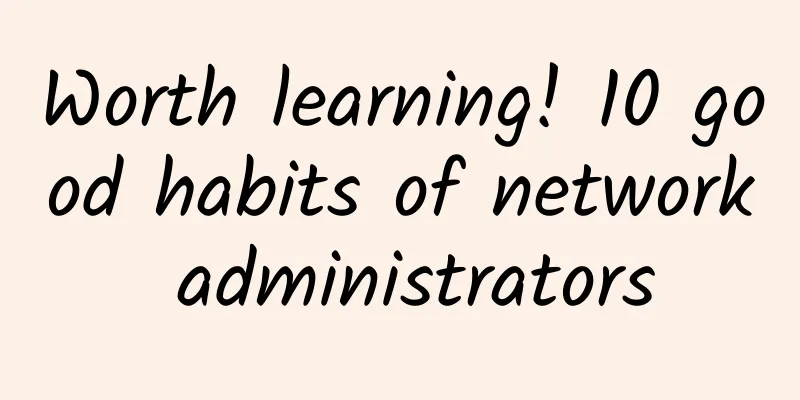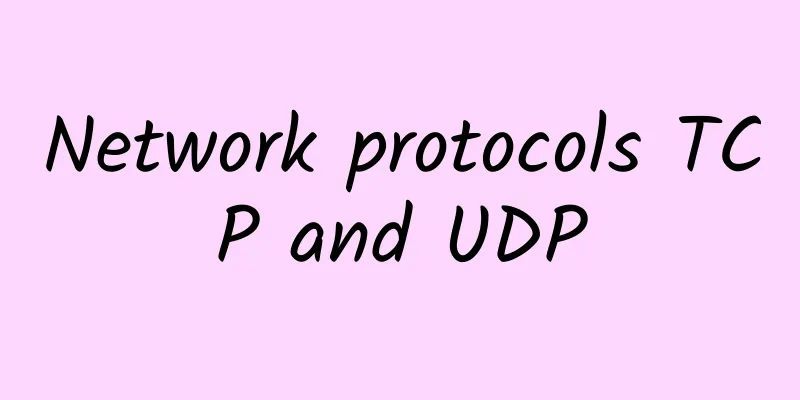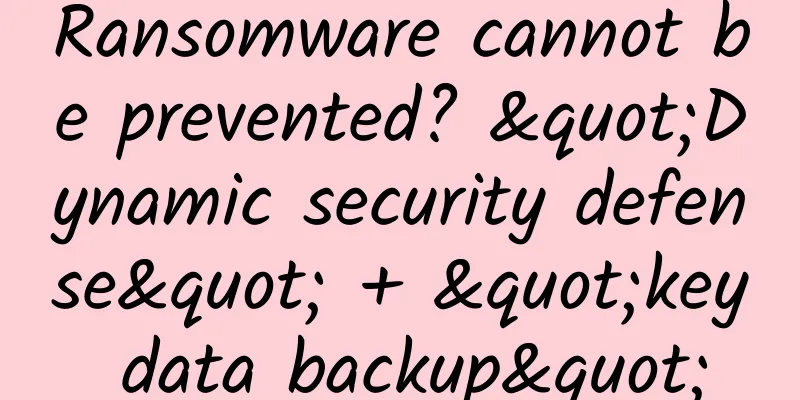Worth learning! 10 good habits of network administrators

|
【51CTO.com Quick Translation】I have been a comic book fan since I was a kid, and have been working as an IT professional for nearly 22 years. Since becoming an administrator, I always think of the "Peter Parker Principle". As the late great comic book master Stan Lee said: "With great power comes great responsibility!" This is similar to the core role of an administrator: with unrestricted access to many, or even all, systems in the enterprise, a single mistake could render systems and networks inaccessible and unusable, ultimately causing significant losses to the company. These 10 habits have served me well during my career as a systems and network administrator. They have helped me avoid making serious career-destroying mistakes. I share these tips with other administrators entering the field, hoping that they will be helpful.
1. Don’t let power go to your head 25 years ago, IT management was very different. Most businesses would not support any device that was not approved by the IT department, and many IT support teams ruled with an iron fist. Fortunately, this behavior in the tech world is largely behind us; as remote work becomes more prevalent and the lines between company and personal devices blur, the definition of the office is changing. IT departments are redefining what devices can be realistically managed and what policies can be enforced without preventing users from doing their jobs efficiently. 2. Document everything Over the years, I have been bombarded by colleagues for my insistence on documentation. You never know when a security incident will occur, and more importantly, you never know what situation you will be in when it happens. If it is entirely up to you to save the network and you are not there, the loss is huge. However, if you must ask another team member or contracted vendor/MSP to correct the problem, they should have everything they need to ensure that the problem is corrected correctly and quickly based on your documentation. In addition, this can help you remember, especially for services that are not managed or changed frequently, such as network, controller and router configurations. 3. Have a backup plan Administrators often oversee various deployments and upgrades to hardware and software. While many projects involve no design changes, that doesn't mean all of them go smoothly. So have a backup plan. It’s always important to have a backup plan if your initial move hits a snag. The backup plan should get you the rest of the way there, or help you get back to normalcy with minimal downtime. 4. Never stop learning This habit applies to anyone in the technology industry because the industry is constantly changing. Yes, the core or fundamental things may not change, but the implementation process and best practices change over time. It's absolutely necessary to continue learning (whether formally, through experience, or self-study) in order to be as effective as possible, but never stop learning your craft. A wealth of knowledge can only make you a better administrator and can help you work smarter, not harder. It can even help you keep your job or get a newer, more desirable position. 5. Communicate effectively with stakeholders This habit seems simple, but I am still surprised when I see some administrators moving forward with projects without ever telling the users what is going on. Also, include supervisors, managers, and executives so that everyone is on the same page in the future. Plus, it’s always good to have management on your side. Of course, a lot depends on the culture and policies that govern your organization. But I have yet to see a call from someone who thought it was a bad idea to get an email telling them to update at a scheduled time or date. Sadly, I have seen many emails where projects were initiated but no one took a moment to advise stakeholders on alternatives to keep things moving. 6. Strong yet flexible Being flexible is not the same as being weak. Yes, being too flexible can make it difficult to get projects started or even to finish them on time. However, being too rigid can result in a failure to get projects approved again, and people may think you are too impatient or stupid. It’s best to have a balance of toughness and flexibility. A certain amount of toughness is needed to ensure that the network remains stable, secure, and performs well, while flexibility takes advantage of availability, automation, and a little compromise to complete the project in a timely manner. 7. Always keep the big picture in mind Interestingly, as IT professionals move from the help desk to field support to administrators and beyond, the job ultimately remains the same: we still solve problems at heart, but the scope of the work has changed significantly. The user's perspective hasn't changed much, though—they still care about their problems, that's all. As an administrator, you always need to have a clear view of the big picture, as most changes made at your access level will have large-scale impacts, which is important to remember. 8. Don’t forget the details Details can be the factor that derails a project or saps morale, or worse, causes the company and stakeholders to lose confidence in IT. Pay attention to the details. Don't gloss over the details in order to get the project done. 9. Test, Validate, Implement, Monitor, Repeat Don't settle for running the system as is. What I mean by this is don't fall into the trap of having your IT department simply react to work orders or requests that are given to them. While this is a way to manage, it doesn't adapt well to change. It makes it harder to get projects started, let alone get them done correctly. While the network may be stable and running smoothly for now, that is only temporary. Over time, new technologies will become available, which makes it easier to make changes, unless you want to wear out your equipment completely. No, administrators love technology and love to test new equipment, verify how it works in a working environment, and eventually implement and monitor to see how it works in the long term. It's all part of the job until we have to upgrade again. 10. Admit your mistakes and learn from them I think the most important habit is to admit mistakes and learn from them. No one wants to make mistakes, but they happen. There are three parts to a mistake: the behavior that led to it, whether we admit it, and what we do next. What we choose to do after each step indicates more about how well we will handle situations in the future. Original title: 10 good habits of network administrators, author: Jesus Vigo [Translated by 51CTO. Please indicate the original translator and source as 51CTO.com when reprinting on partner sites] |
<<: Introduction to VPN technology and commonly used VPN networking methods in enterprises
>>: Animation explains TCP. If you still don’t understand, please hit me up
Recommend
China's 5G smartphone shipments reached 108 million units, but how many people use 5G?
my country has always been the world's larges...
Pride and Prejudice in Data Centers About Software
When it comes to data centers, most people will f...
It is easy to raise a sail in the river, but it is difficult to sail against the current - Huawei is making full efforts in the public cloud 2.0 era
[51CTO.com original article] Recently, Huawei and...
Summary information: PIGYun/Wuluoyun/Tewang Technology/Hengai Network/GCCCloud
Affected by the epidemic, I have participated in ...
Three "fairy tale" ways to build a data center
There is a very important indicator for evaluatin...
Intellectual Property Day | The global 5G patent contribution map has been determined, and the 6G patent race has started
"Knowledge is power." Intellectual prop...
Summary of wireless network wiring principles and methods!
Select the location of the wireless AP For wirele...
Wall Street's largest securities service platform brings blockchain technology to the CDS market
[Original article from 51CTO.com] According to Bl...
An introduction to different types of edge computers
Before buying edge computer hardware, we must fir...
Is 5G only about fast internet speed? Is it a rigid demand or a false demand?
In 2019, we thought 5G was a distant thing, but i...
7 pictures to help you understand the difference between HTTP and HTTPS!
1. Introduction to HTTP Protocol 👨🏫 Interviewer:...
Understand fiber-based LAN architecture
A local area network (LAN) is a computer network ...
If there is a problem with IT asset audit, I will ask you whether you are afraid or not.
No one likes audits. As an IT manager, the thing ...
Job hunting winter Internet companies even outsource architects with a monthly salary of 80,000 yuan
[[251420]] On the one hand, the number of employe...
Understanding HTTP and TCP protocols from an HTTP request
[[347384]] From an HTTP request to see the princi...









